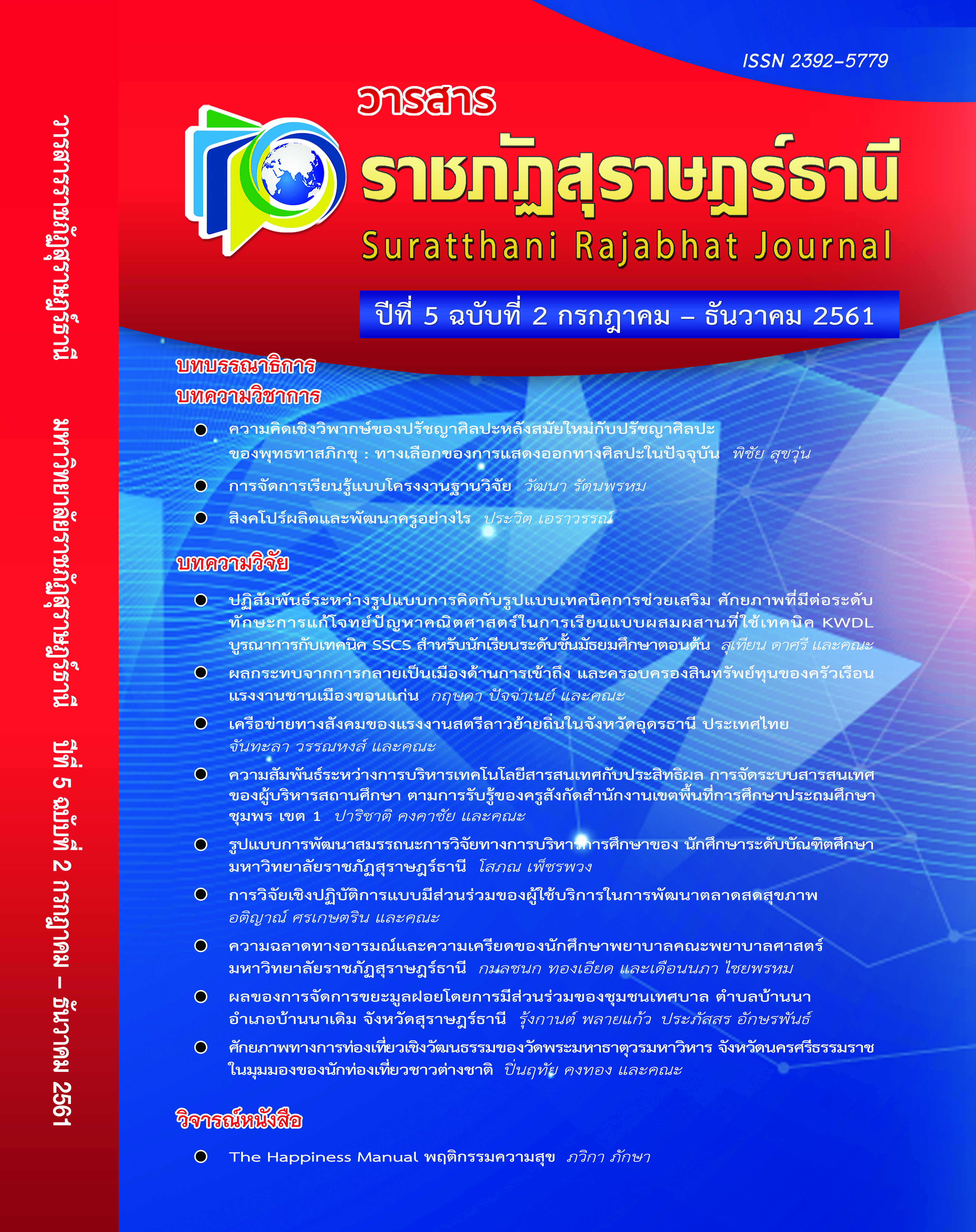Interaction between Cognitive and Potential Enhancement Styles (Scaffolding) on Mathematic Problem Solving Skills in Blended Learning with KWDL Integrated with SSCS for Junior High School
Main Article Content
Abstract
This research aims to study the interaction between cognitive and technical patterns in potential enhancement that affects the level of mathematical problem solving skills and Blended Learning which uses the KWDL technique integrates with the SSCS technique with grade 8 students. The samples were 80 grade 8 students who have different cognitive styles and participate in mathematic classes at Saikaewwittaya School, Secondary Educational Service Area Office 33. There are 3 research tools. First are 17 learning management activities with Scaffolding method, which is enhanced by KWDL technique integrated with SSCS technique, for each style. The average score of experts’ opinion is at the highest level ( =4.51, S.D.=0.45). Second are 30 items of the achievement test with 4-choices whose difficulty, discrimination, and validity index are 0.28 - 0.72, 0.25 - 0.63, and 0.83, respectively. Third are 3 essay items of the mathematic problem solving skills test. This test has a difficulty and discrimination index at 0.47 - 0.66 and 0.23 - 0.30, respectively. In addition, the validity index of the examiners and the test are 0.98 and 0.74, respectively. The statistical methods for analyzing data consist of Arithmetic mean, Standard Deviation, Percentage average, and Two-Way ANOVA for statistical hypothesis testing.
The results were as follows:
- The variance testing results of students who have different cognitive styles and were trained on technical patterns in potential enhancement and Blended Learning which uses KWDL technique integrated with SSCS technique on mathematic problem solving skills showed no significant difference at the 0.05 level.
- The variance testing results of students who have a Blended Learning style which uses KWDL technique integrated with SSCS technique and were trained on different technical patterns in potential enhancement on mathematic problem solving skills were significantly different at the 0.05 level.
- There were no significant Interactions at the 0.05 level between cognitive styles and Blended Learning style which used KWDL technique integrated with SSCS technique on different technical patterns in potential enhancement on mathematic problem solving skills.
Article Details
References
Ministry of Education. B.E.(2008). The Basic Education Core Curriculum B.E. 2551 (A.D. 2008). Agricultural cooperative Federation of Thailand Printing. Bangkok ,Thailand.
PISA Thailand,The Institute for the Promotion of Teaching Science and Technology (2011). Results of International Student Assessment in Mathematic and Scientific reading literacy 2009. 457/6-7 Arun printing. Bangkok, Thailand
The Institute for the Promotion of Teaching Science and Technology (2011). Basic Mathematics Book for mathayomsuksa 2 students volume 2 follows the Basic Education Core Curriculum 2008. The Teachers' Council of Thailand : Ladprao. Bangkok,Thailand.
Vygotsky, L.S. (1978). Mind in Society : The Development of Higher Psychological Process. Cambridge : Cambridge University,
Witkin, H.A., Oltman, P.K., and Karp, S. A. (1971). A manual for the Embedded Figures Test. Palo Alto, CA : Consulting Psychologists Press.


